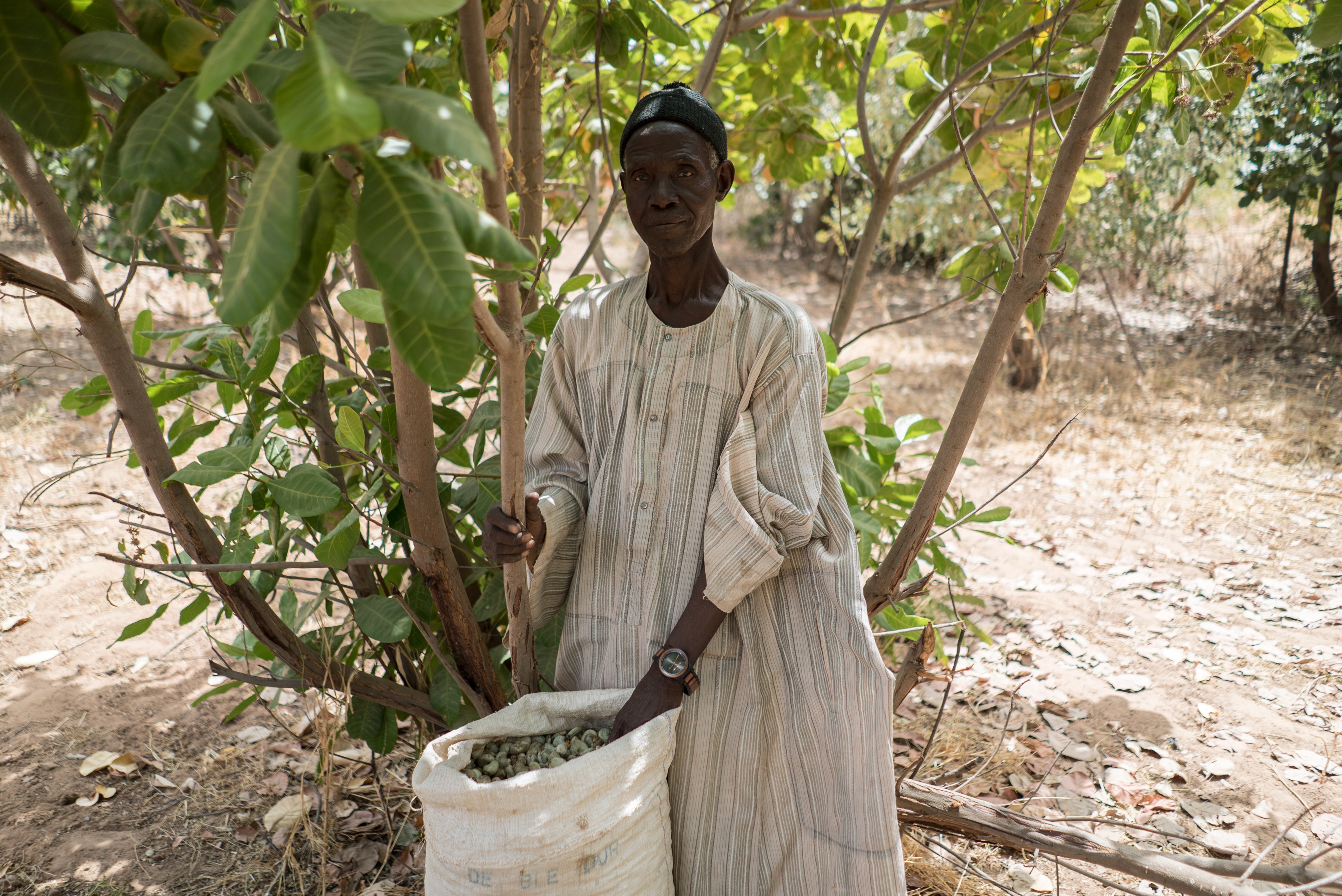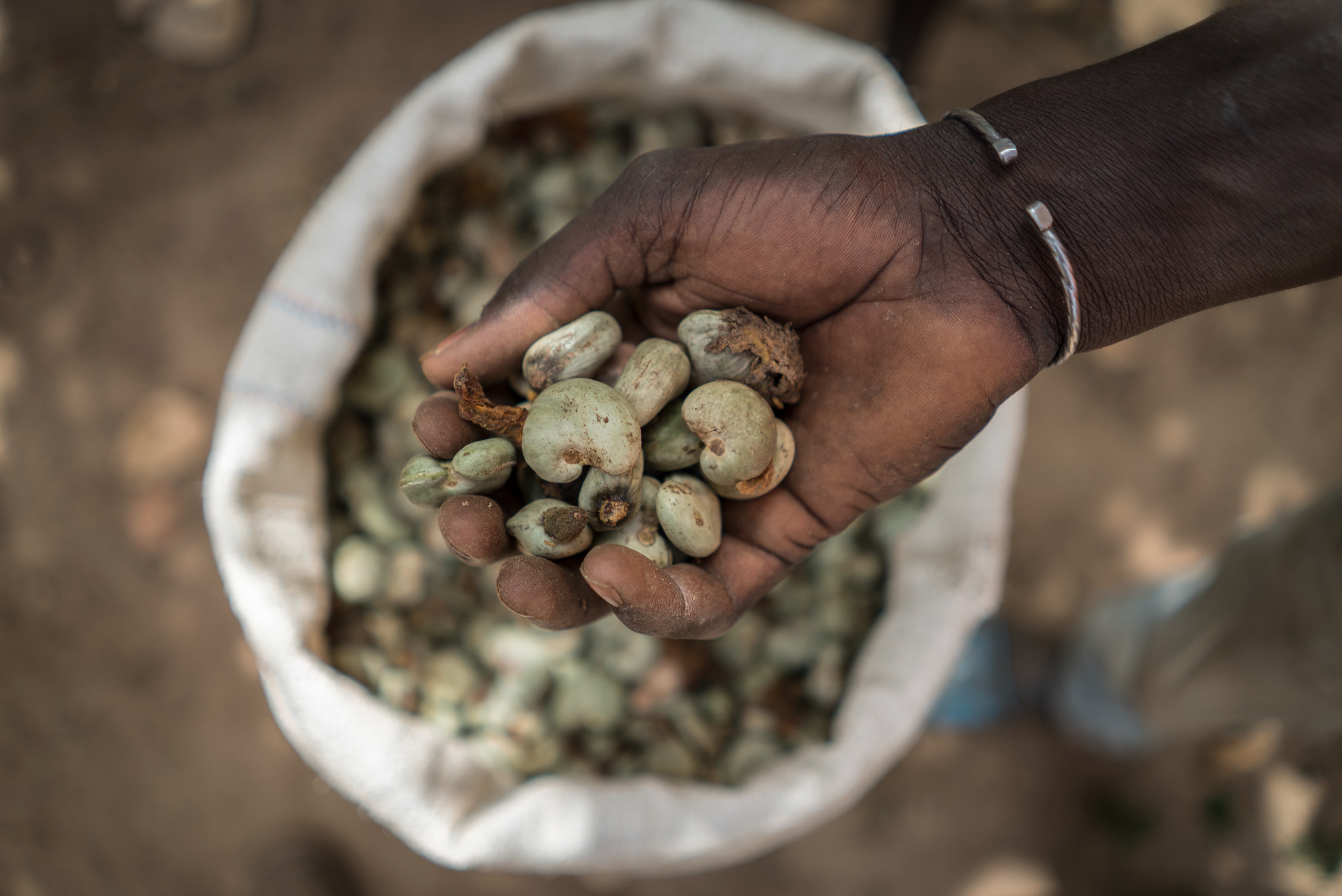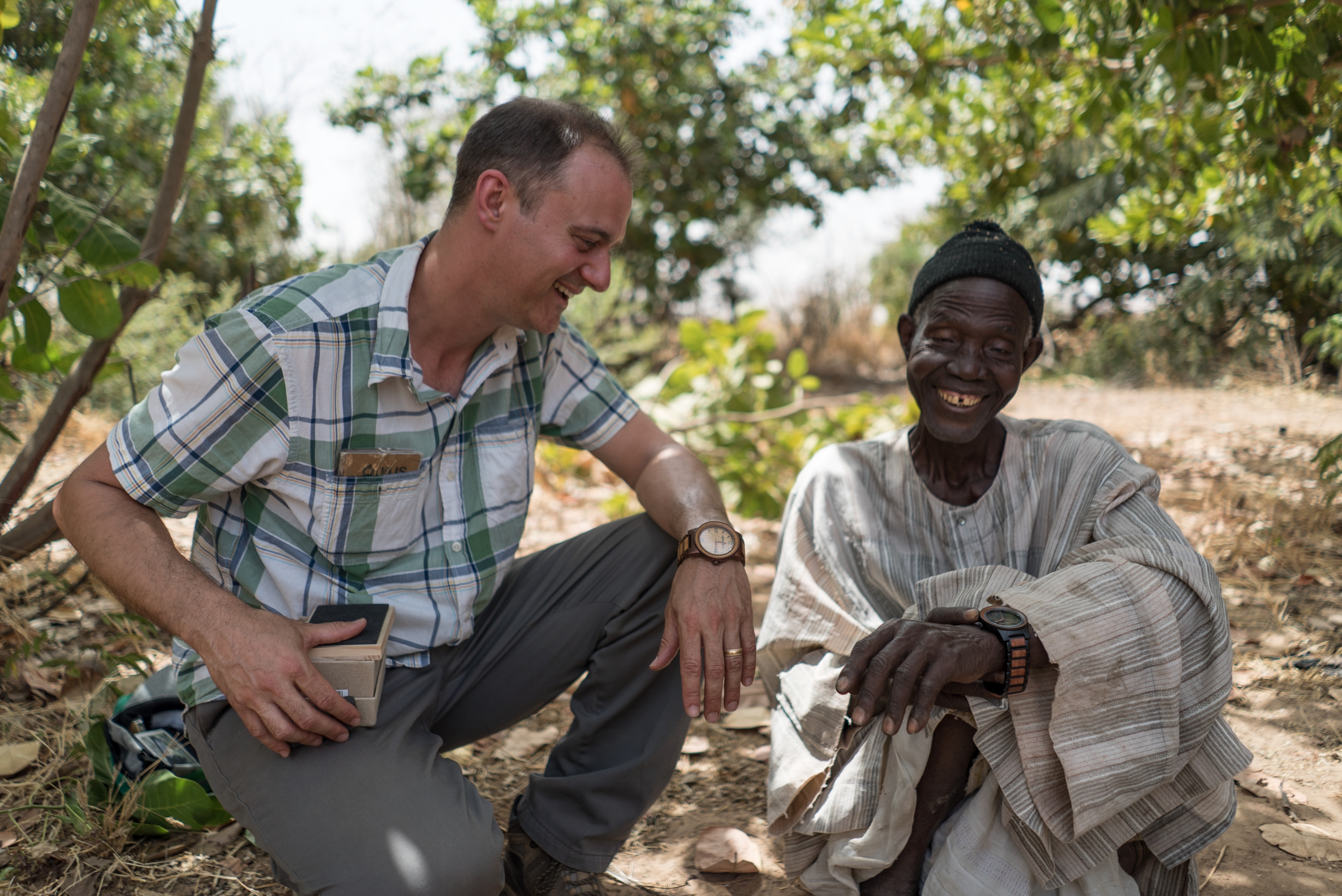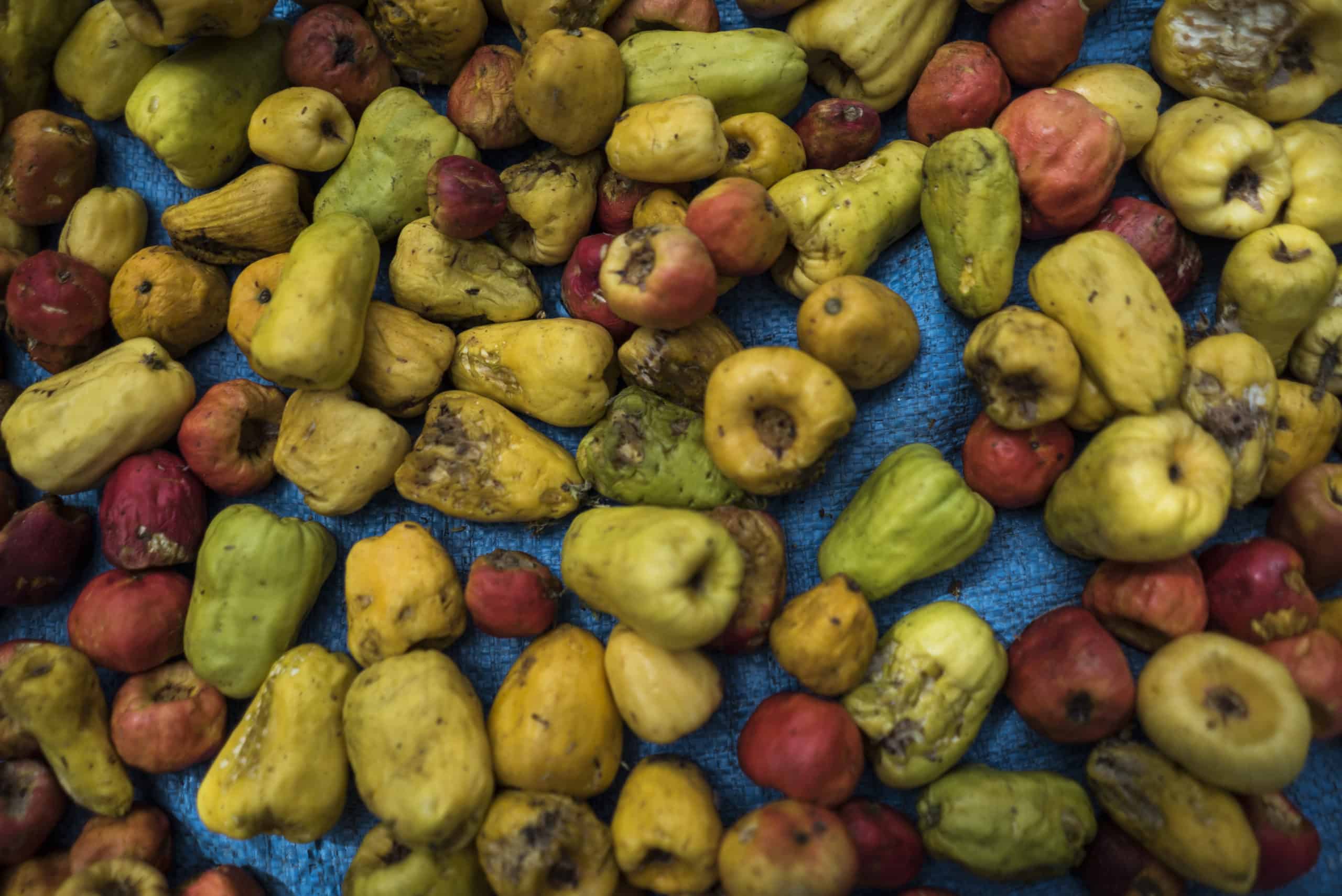In his new book One Shot: Trees as Our Last Chance for Survival, Author and Executive Director of Trees for the Future, John Leary, explains how Cashew trees are changing lives. He tells us the story of how one farmer, Keba Mbengue’s, “life has improved tenfold.”

The Tree Itself
The Cashew tree (Anacardium occidentale) is strategically planted in our Forest Gardens as part of our climate-smart agroforestry initiative. This super tree provides numerous environmental benefits:
- It withstands drought and severe climate conditions.
- The tree retains water in the ground, helping other plants in the Forest Garden thrive.
- Its leaves enrich the soil by building up organic matter.
“As we walk in Keba’s Forest Garden, massive cashew trees with thick green leaves tower above and bees hum among their flowers. I can see Keba’s pride as he carefully searches the branches for the first fruit of the season.”

The Nutritious Cashew Apple
“When I asked I asked Keba how much he sells the cashew apples for, his solemn, chiseled face breaks into a smile that stretches ear to ear. ‘I give away more then 150 pounds of the cashew apples every season to the kids in the village.”
The cashew apple, a bright, sweet, and tart fruit, grows during the dry season in Senegal. Though not commonly sold in Western markets, it is rich in Vitamin C, Calcium, Potassium, and antioxidants, providing essential nutrients for those who eat it.
Many of our farming families and their neighbors love the fruit’s juicy, soft texture. Additionally, it provides nutrients that they once lacked.
The Money Maker Fruit

“He also fills a quarter-ton barrel with cashew nuts twice a year.”

The Cashew tree is not only good for the environment and family health but also a vital source of income. Due to its popularity, farmers like Keba sell large quantities of cashew nuts at high prices. This is especially beneficial during the “hungry season,” a time when nutritious food and income are scarce.

“Pride, generosity, compassion and hope all beamed forth from the face of a man who once couldn’t feed his own family. A man who now stands grounded and solid, flourishing and nurturing – a mirror image of his trees.”
The Cashew tree, fruit, and nut have become game-changers for our farmers and the environment. We are proud of the hard work our Forest Garden farmers do to grow and care for their trees. Their efforts help both their families and their communities, leaving a legacy for generations.
Get your copy of One Shot to learn more about other fascinating trees and how they are the solution to improving lives, our food systems, and our ecosystems. Available now at Amazon or Barnes and Noble and trees.org/oneshot.
